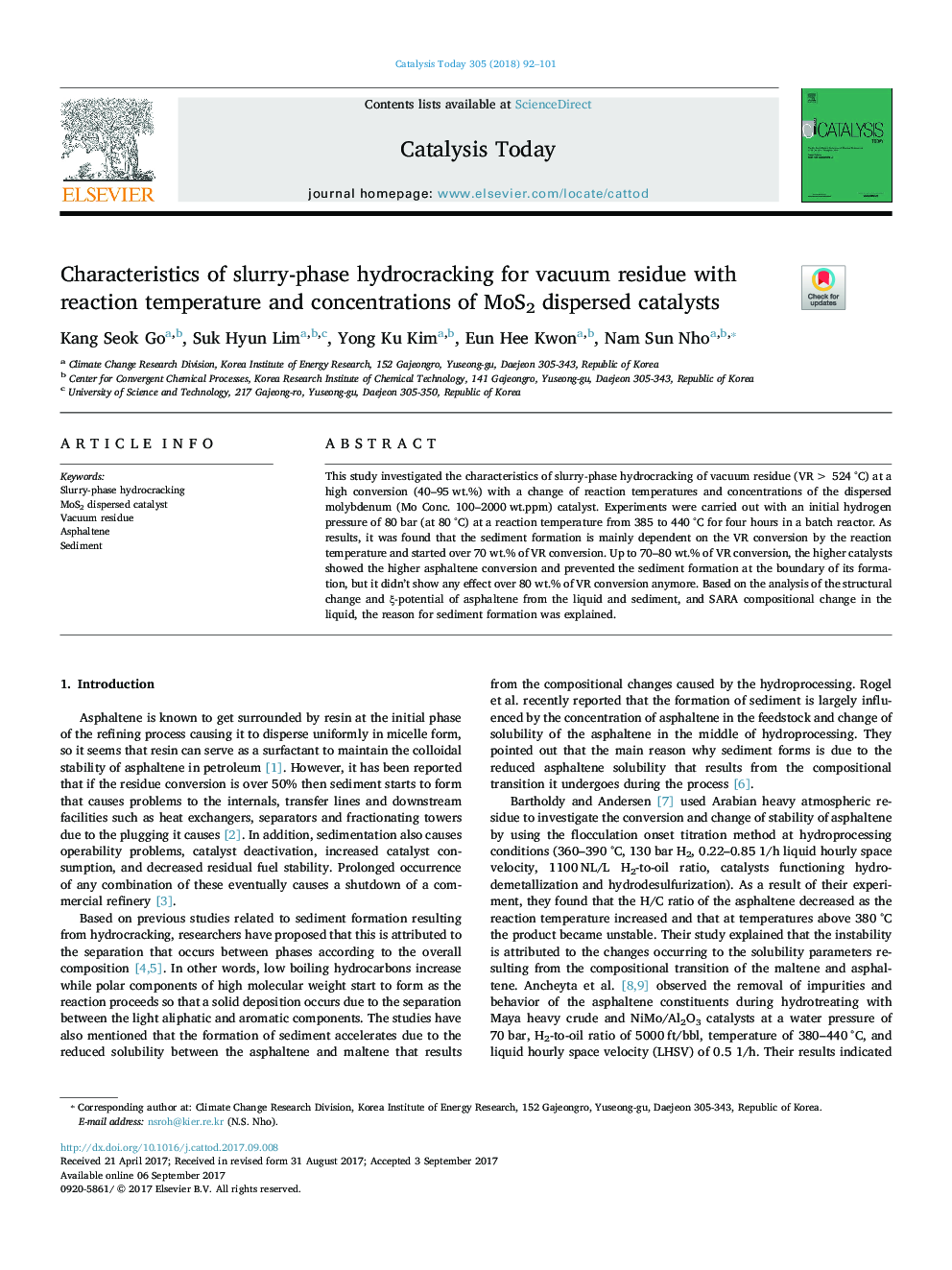| Article ID | Journal | Published Year | Pages | File Type |
|---|---|---|---|---|
| 6504566 | Catalysis Today | 2018 | 10 Pages |
Abstract
This study investigated the characteristics of slurry-phase hydrocracking of vacuum residue (VR > 524 °C) at a high conversion (40-95 wt.%) with a change of reaction temperatures and concentrations of the dispersed molybdenum (Mo Conc. 100-2000 wt.ppm) catalyst. Experiments were carried out with an initial hydrogen pressure of 80 bar (at 80 °C) at a reaction temperature from 385 to 440 °C for four hours in a batch reactor. As results, it was found that the sediment formation is mainly dependent on the VR conversion by the reaction temperature and started over 70 wt.% of VR conversion. Up to 70-80 wt.% of VR conversion, the higher catalysts showed the higher asphaltene conversion and prevented the sediment formation at the boundary of its formation, but it didn't show any effect over 80 wt.% of VR conversion anymore. Based on the analysis of the structural change and ξ-potential of asphaltene from the liquid and sediment, and SARA compositional change in the liquid, the reason for sediment formation was explained.
Related Topics
Physical Sciences and Engineering
Chemical Engineering
Catalysis
Authors
Kang Seok Go, Suk Hyun Lim, Yong Ku Kim, Eun Hee Kwon, Nam Sun Nho,
